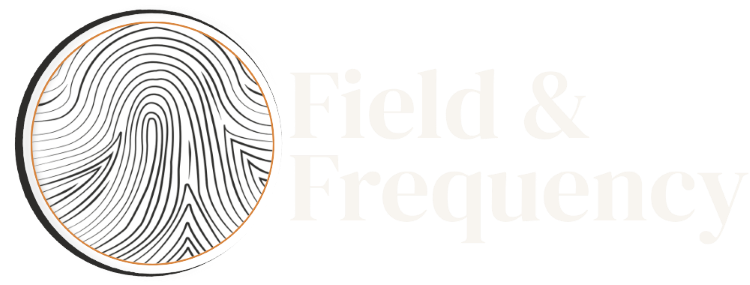5 June 2025
Words that Welcome (Or Push People Out)
The language we use shapes who feels seen, who feels safe, and who quietly disappears.
The Problem: The Language of Power
Some exclusion is loud. But most of it is quiet.
It shows up in the way we speak. In the phrases we repeat without thinking. In the metaphors that feel natural, because they were built for people like us.
Corporate culture is full of these phrases.
“Let’s huddle.” “She’s a beast of a project.” “We need someone who can quarterback this.” “We’re at war for talent.”
And in transit, we hear it too: Operators who are skilled, frontline professionals with complex training and daily emotional labor are casually referred to as “drivers.” As if their only job is turning the wheel.
Language flattens. It shrinks roles, reinforces hierarchies, and tells people what kind of value we really assign to their work.
These aren’t just words. They’re signals about who belongs and who doesn’t.
The Cost: Inclusion That Isn't
You’re told to foster inclusion. To use welcoming language. To promote “diversity of thought.”
But what happens when the language itself is the barrier?
When metaphors assume a shared cultural background (think sports metaphors, war or militaristic metaphors, and so on). When jokes rely on gender or race stereotypes. When “professionalism” becomes code for assimilation.
Even when well-meaning, these patterns reinforce imbalance. They create an “us” and a “them.” They ask people to translate themselves in order to be taken seriously.
And slowly, that translation becomes exhaustion.
Think back to a time when someone described you in a way that didn’t quite fit. A compliment that landed off. A phrase that made you feel suddenly outside the circle. The words were small, but the signal was clear: This space isn’t made with you in mind.
A Real Example: The Manager Who Didn't Hear Himself
In a team meeting, a well-liked manager gave kudos:
“Sasha really quarterbacked that presentation—she owned it. It was a beast of a project, and she handled it like a champ.”
The manager meant it as praise. But here’s what Sasha heard: A sports metaphor she didn’t relate to. A project described like a creature. A shout-out that still felt strangely… distant.
Sasha is queer, neurodivergent, and a first-generation professional. She appreciated the recognition. But she also felt like she was being filtered through a vocabulary that never quite fit her.
A vocabulary built by and for a different kind of leader. One that rewards boldness but only in familiar forms. One that praises presence, but only if it looks a certain way.
And it’s happening all the time. Not just to Sasha. In boardrooms, at water coolers, in team meetings, in feedback sessions.
People are being misnamed. Misunderstood. Misread. Because the language doesn’t know how to see them.
Red Flag Language to Watch For
These phrases may seem common (or even harmless) but they quietly reinforce exclusion:
“She’s just emotional” → Dismisses real feedback, especially from women.
“He’s so articulate” → Backhanded when applied to BIPOC colleagues—implies surprise.
“Culture fit” → A vague gatekeeping tool for “people like us.”
“That’s too much for our audience” → Often used to silence race, gender, or queer realities.
“Spicy / feisty / sassy” → Infantilizing and racialized, especially toward women of color.
“She’s bossy” → A gendered critique rarely applied to men. It penalizes women for showing leadership without softness.
Using “it” to describe trans people → Not a slip. Dehumanizing.
“We don’t care who you are as long as you do your job” → Erases identity. Tolerance isn’t belonging.
“Alternative lifestyle” / “flamboyant” / “colorful” / "...something"→ Euphemisms that flatten queer people into caricatures.
“That outfit is brave” → A veiled way of saying “someone your size shouldn’t wear that.” It’s not kindness. It’s control.
These red flags aren’t about being “PC.” They’re about not reinforcing dominance through default language.
Taking Stock: Language as Reflection, Not Reflex
Before you speak, write, or post, pause. Ask yourself:
Is this phrase inclusive, or just familiar?
Does it reflect shared experience, or a narrow one?
Am I unconsciously prioritizing confidence, boldness, or aggression as default strengths?
Would everyone in the room understand and feel welcome in this language?
Because real inclusion isn’t a checklist. It’s a habit of linguistic self-awareness.
What to Do Instead
→ Audit your go-to phrases. Are they gendered? Militarized? Culturally coded? If so, swap them.
→ Drop the metaphors when clarity matters. Instead of “quarterback this,” try “lead this.” Instead of “war room,” try “focus session.”
→ Watch your compliments. Would you say “articulate” or “feisty” if that person were a white man? If not, don’t say it.
→ Model alternatives. Leadership sets the tone. Make your voice one people can actually relate to.
The Takeaway
Language doesn’t just describe culture. It creates it.
If your words only feel natural to a narrow group, they’re not neutral. They’re coded.
If people are constantly adjusting their language to sound like they belong, they may not feel included at all. They may just be working hard to stay in the room.
We don’t need perfect phrasing or perfect words. We need conscious ones.
Because every word either opens the door, or reminds someone they weren’t supposed to be here in the first place.
Up Next in The Signal
The Myth of Neutral Messaging We'll explore how trying to “stay out of it” is its own kind of spin, and why values-neutral communication isn’t neutral at all.

